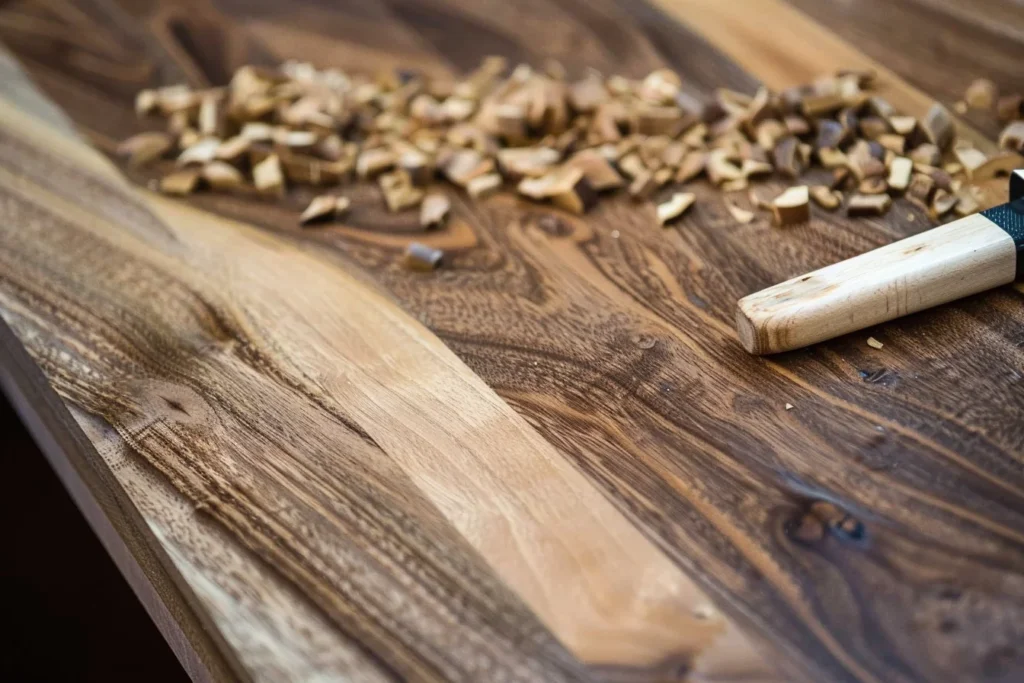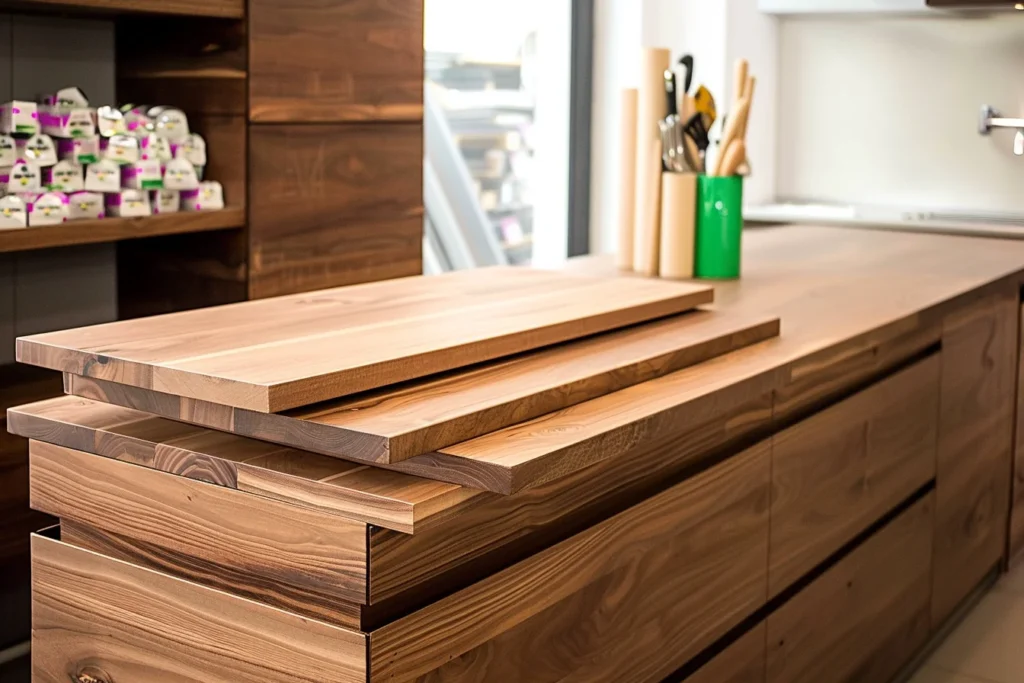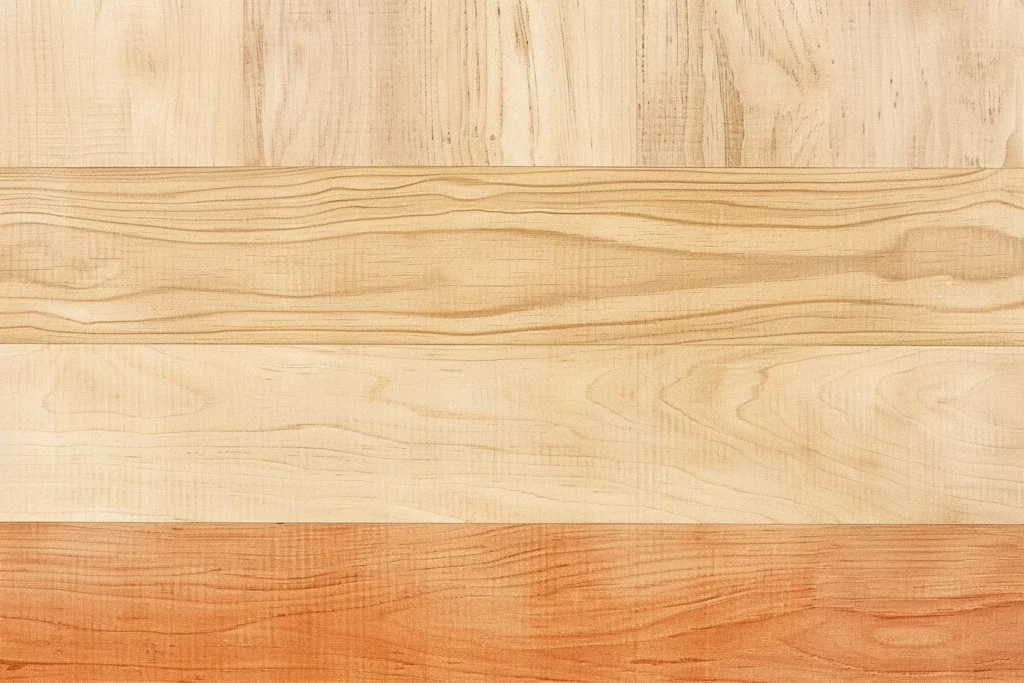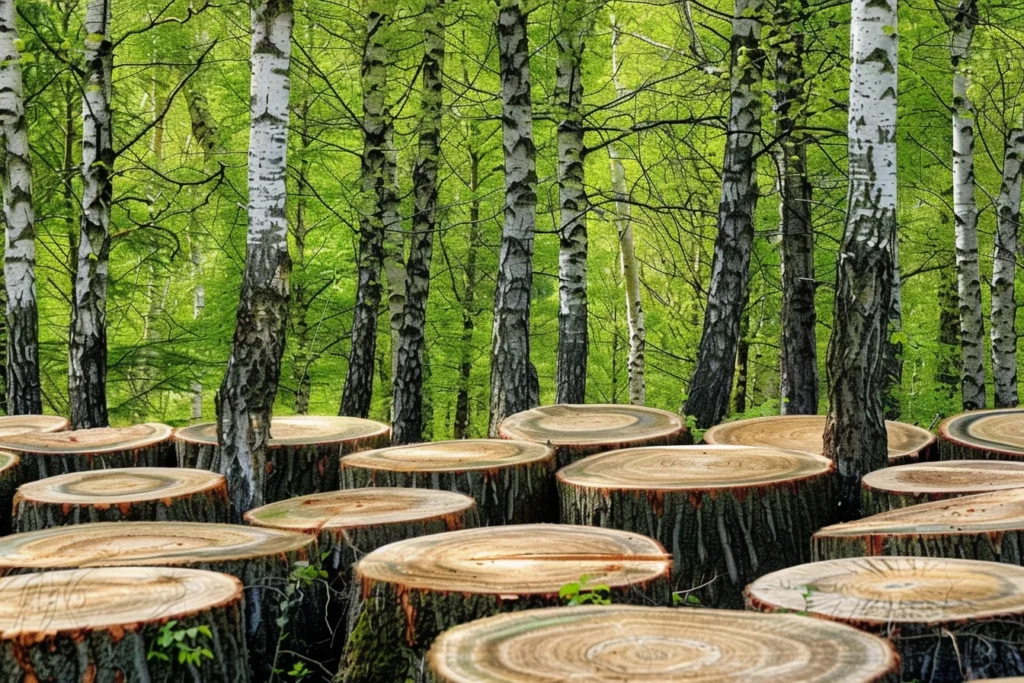You do not know where to begin when it comes to selecting the type of wood for furniture, floor, and refurbishing your cabinets.
How would you be able to choose between walnut and poplar if they all look like choices that will lead you into an existential crisis? Do not worry, I will help you make sense of it.
Poplar vs. Walnut: A Battle Royale in the Woods
Based on my own experiences in woodworking land, here’s the lowdown:
Medium-grained walnut is a hardwood diva who demands both respect (and most likely your wallet) while fine-grained poplar is less flashy but ready to shine or at least take well to paint as it does not take to staining very well.
If you want some heavy-duty furniture or you want to impress your partner’s parents, this is your dream material.
It is strong, beautiful, and versatile enough for everything from floors to fancy-looking cabinets. But let’s face it, this stuff can really drain your account balance.
Now listen here. Poplar is the thrifty one. It may not be as tough as walnut, so don’t smack around, but if all you need is something painted, then go ahead with building it with this softwood.
It’s more like that practical friend who may have nothing else going on except helping lift up a sofa during moving days.

Essential Insights on Walnut Wood
Now let us delve deeper into the world of walnut; specifically Eastern Black Walnut, also known as American Black Walnut or its superhero moniker Juglans Nigra. It is the James Bond of woods – sleek, classy, and tough as nails!
Now here’s a little secret: walnut is hardwood but before we go any further let’s debunk a myth that “hardwood” does not mean it’s hard enough to block a bullet.
It just comes from dicot trees, unlike those fast-growing gym bro softwoods.
So whether you choose the sturdy elegance of walnut or hardwearing paintable poplar, you now know better.
Go ahead and select your timber wisely or sillily depending on how best it suits your project or personality.
Colors of Walnut wood
Walnut’s color range is a dessert menu of options. From pale blondes like creamy lattes (which is the sapwood) to rich, dark chocolates and coffees of the heartwood.

And oh, that heartwood! It doesn’t stop at coffee but mixes in some light browns, odd purples, scanty grays, and even a bit of reddish tinge because it is fancy like this.
Care for Walnut Wood
Taking care of walnut wood feels much like taking care vintage car. It does not need much if anything apart from being dusted off occasionally to keep it clean and tidy.
Do not use these commercial cleaning agents; they smell like old cologne – strong and long-lasting.
For those people who own walnut furniture that were finished using oil then you can consider treating it once annually with natural Danish linseed oil – likely twice if in hot areas since even timber needs moisture.

Utilities of Walnut Wood
Walnut isn’t something you simply date—it’s more accurately compared to marrying material rather than dating stuff: serious commitment material.
Upscale cabinetry? Check. Luxe furniture? Check-check-check. Elegant all-natural hardwood flooring? You betcha.
Sustainability of Walnut
Well, here is the catch – walnut trees are like princesses in forests, they take over a hundred years to grow through life and reach maturity. They aren’t on the endangered species list but not exactly flooding the globe either as they are very popular among people.

Poplar Wood in a Nutshell
Poplar is the kind of wood that loves to be part of the scenery. It may have a straight and even grain, however, in the world of woods, it is overshadowed by other hardwood celebrities like walnuts. Yet appearances can be deceptive, as we will see later.
Is Poplar a Hardwood or Softwood?
Even though Poplar is gentle, strictly speaking, it’s hardwood. But don’t let that fool you—it’s one of those softer kinds as far as hardwoods go, like a marshmallow wearing a little helmet.
The coloration of Poplar Wood
Oh, what hues! The heartwood ranges from light cream to yellow-brown, sometimes with hints of green scattered throughout.
In contrast, sapwood (the shy one) keeps mostly white or pale yellow. As time goes by poplar grows older like wine gets darker or more yellowish.

Uses for Poplar Wood
Historically used for making Native American canoes, nowadays it’s turned into dinnerware and coffins (a bit morbid maybe but versatile!).
It also forms the framework that supports upholstered furniture and lies beneath veneer layers in plywood. It also occasionally can be a star of artisan furniture when it gets a bit cocky.
Sustainability of Poplar Wood
Poplar is no diva on the environmental stage. It has not been red-listed for any major conservation group’s threatened species list, making it as sustainable as your reusable coffee cup.
This means you don’t have to feel like you are sporting fur at a PETA rally when using it.

Walnut vs. Poplar: The Hardwood Durability Duel
Walnut, just like Arnold Schwarzenegger is a hard, experienced wood that doesn’t budge or break easily.
It is dense and solid, plus it has natural oils and resins that act as water-repellents on your furniture, just like a well-oiled raincoat.
Poplar, the underdog of hardwoods, is also known for its strength but not to the same extent as walnut.
Because it’s less durable than others and can be damaged more easily by rough use, such wood may have been compared with paperback books in rainy weather conditions.
Walnut vs. Poplar: The Cost Conundrum
Poplar—cheapest friend in the wood world. It is like a speedy runner in the lumber race hence it is available in plenty and hence cheap.
For example, for your furniture projects, cabinets, or interior trims they are not recognized as much as they should be.

This is what you call real value for money when you don’t want to compromise on quality. You choose this kind of wood whenever you want to save money and still receive good results.
RELATED: 35 Adorable Bedroom Ideas For Women
Walnut, on the other hand, is quite expensive compared to other types of hardwoods. It’s likened to a diva among woods.
This is because it is very selective when it comes to growing due to its preference for life’s slow lane.
The reason why walnut costs so much? Because it prefers taking things easy during its growth, meaning that there isn’t much of it around these days thus raising the cost of obtaining it by a significant amount.